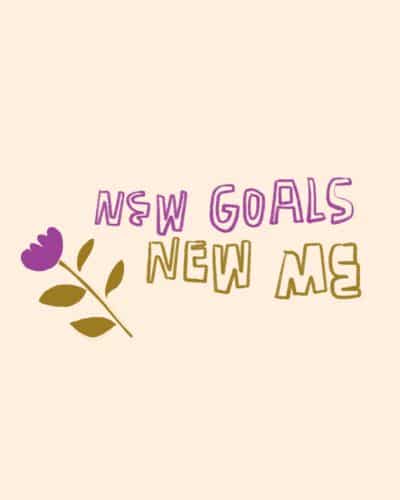This is the episode where I talk about creative careers. We talk about defining success on your own terms, calendar blocking, and the power of self-initiated projects.
Related Links:
Download the 10 affirmations that changed my life.
Follow Justin on Instagram and tell me what you think of the episode.
Preorder my new guided journal The Reset Workbook.
Order Joy Bombs affirmations cards.
Here’s the full transcript:
Breaking News: You spend a third of your life on your career. Here’s your permission to make it something you actually kinda like and not something you feel like you need to just endure.
This is Justin and you’re listening to SoCurious About, a weekly podcast about creativity, marketing and joyful living.
And today I’m so curious about the creator economy, so I gathered 9 thoughts how to build your creative career.
But before we dive in, over the past 15 years, I’ve worn every hat you can imagine as a creative professional.
I’ve had job titles like graphic designer, web designer, social media manager, creative director, director of marketing, photographer, illustrator, and communications manager…
High key, if there was an opportunity to flex my creative muscles, I jumped at the opportunity.
And through the combination of personal projects, life experience, and meaningful self-work, I have my fair share of career advice for creative professionals.
In today’s episode, I’m going to give you nine pieces of advice to help you stay inspired, focused, and productive in your creative career.
1. Success can have so many different meanings for creative professionals. And you get to define what success means to you.
Don’t chase after someone else’s dream.
Instead establish what success means for you and build a life you love.
That might mean letting go of specific job titles or focusing less on breaking six figures, if you prefer to prioritize work/life balance.
It might mean committing to the hustle and grind for a specific period of time, so you can become that high powered executive.
It could also mean working an easy job you don’t love, so you have time to work on your creative interests without the need to monetize them.
In life, there are no right or wrong answers.
We just make decisions. And then based on the results we make changes.
So take all that pressure off and sit down so you can think about what truly makes you happy.
2. Eat the frog first thing every single day.
This aphorism originally comes from a Mark Twain quote: “If it’s your job to eat a frog, it’s best to do it first thing in the morning. And if it’s your job to eat two frogs, it’s best to eat the biggest one first.”
I love this phrase so much because depending on the season of my life, I can definitely be the time of person that puts off the most important work and instead focus on the things that feel the most fun.
But this is an important reminder.
Instead of procrastinating, do the one task you’re dreading first so you can get out of the way.
This frees up mental space and allows you to be more creative for the rest of the day.
Now in reality, I don’t fully follow this.
I’m a morning person and so my mornings are often found writing new content or doing illustrations. 7-8:30am is my time to do the things that make me happy and feel a little more creative.
But around 9:00am, as the day truly begins, that’s when I do the most boring, most annoying or most mentally taxing. Because I’m fresh and ready to tackle something challenging.
3. No one will advocate for you if you aren’t willing to advocate for yourself.
It’s easy to assume that people are hyper-aware of your interests, needs, and expectations. But you have to remember that your coworkers and manager are dealing with their own set of goals and objectives.
It’s your job to remind them of the good work that you’re doing, the growth that you’ve made, and your goals for the future.
This comes up a lot in corporate culture especially. When you’re working on team focused projects, there will often come times when you need to set some clear and healthy boundaries.
One tool that helped me was adding meeting blocks for deep work and lunch to my work calendar.
Let’s be clear, I love lunch. I’ve never been the type of person that can feed themselves while cycling through emails.
Lunch for me is a beautifu experience where for ideally 30- 45 minutes, I can disconnect from the rest of my responsibilities and reset before getting back to the hustle of the work day.
But when I first moved to Austin, I worked at a company that was so meetings heavy that I barely had time to grab a glass of water, let alone have a moment to eat the second most important meal of the day.
Is breakfast even the most important meal of the day or was that just a campaign to sell more Kellog cereal.
To combat this culture, I made sure to add calendar blocks for an hour or two where I could catch my breath and refocus. Sometimes they would have to put a meeting over the block, but generally it helped with my personal overwhelm.
4. You have to have an emergency savings fund… ideally in a high-yield account.
In the creative industry, even the most secure jobs can be volatile.
Save money for rainy days so that you don’t have the financial pressure of being without a consistent salary if you’re laid off.
I am not a professional financial advisor and this is not financial advice.
But let me tell you.Most savings accounts arae trash. They charge you to hold your money as if they arent making tons of money off the fact that they are holding so much money at one time.
I switched my savings account to a high yield savings account and it became joyful to look at my account and see that instead of the pennies a month I was used to, I would see an extra 30-40$ a month.
And as the account got bigger and bigger and biger that number continued to grow.
The best money non-advice I can give. Because I am not a financial advisor and this is not financial advice.
So the best non-financial advice I can give is that you should live below your means. Put 10% directly into savings and live off the rest. And as you start to make more money, put even more money into the savings account.
This habit started for me when I was making 28K and literally sleeping on a foam mattress in my first apartment.
But it’s stuck with me into my current big age.
And this principle eventually helped me to have my year of rest and relaxation, where I took a 13 month sabbatical to write my upcoming guided journal, the Reset Workbook.
5. No one can actually multitask – everybody is lying about this.
The best way to complete a project effectively and efficiently is to give it your full focus.
Make a to-do list at the beginning of the week and take projects one step at a time.
This will lead to a higher quality of work overall and a defined sense of actively getting things done.
I know different brains work differently.
And for some people, playing a podcast while working in excel helps them think better.
But for me, I prefer working in hyper-focused bursts – where I can zone in on a project (hopefully find a flow state) and fully knock it out.
To do this, I pursue the smallest amount of distractions as possible.
But then after those sessions of deep work, I stop progress and step away from the computer to take a real break.
Like why would you take 4 hours to work on a task when you could really just focus for 1 hour and then spend 3 hours doing something you actually would prefer doing instead.
I don’t know maybe its just me.
6. Work hard enough to get the job done well, but not so hard that it directly affects your health or your relationships.
One of the challenges of working in your zone of genius is deciding when to stop working.
It’s important to create things that your clients will love and that you’re proud of, but sometimes pushing for perfection is a waste of energy and time.
Sometimes good is good enough.
So make sure to prioritize all the aspects of your life that matter to you: health, fitness, quality time with friends and family, self-care, and hobbies.
One of the most interesting things I’ve seen in my creative career is that people that are single in the workforce are thought of as having to take on greater amounts of work because they don’t have kids or a spouse to take care of.
Let me tell you in big bold language.
Me going to grab catchup drinks with my homies is important to me.
Me having a quiet evening in my house listening to Michael Jackson’s Off The Wall, while I moonwalk through my apartment is important to me.
Me having the time and space to disconnect from the important work that I do so that I can come back joyful and refreshed is important to me.
And the things that are important to me are the key to having true work life harmony.
So I’m going to advocate for my needs.
I might work on one weekend, but best believe I’m taking a long weekend as soon as I can to make up for it.
Oooh this next thought is a good one about money.
7. Always ask for $5-10,000 more than what they offered.
After multiple rounds of interviews, it’s easy to just be happy that you got a new creative job.
But you could be leaving money on the table if you’re not negotiating for more pay when you get the offer.
It’s always worth countering the offer to see if there’s some wiggle room in the budget.
Here’s a somewhat bummer story that puts this into context. Because I learned this the hard way.
When I got my first job in advertising, I took the first amount they gave me.
It was 28K. I still can’t believe that. I made 28K and was able to support myself which would literally be impossible today. Well I was barely supporting myself. I was sleeping on a foam mattress on the floor. And eating Wendy’s 4 for 4 meals.
But when I went to the next job, they were like, we can offer you 28K.
I don’t even think I considered it before I blurted out. I need to make 36K so I can pay rent.
That was probably not the most professional way to say it.
And to be honest, I was immediately mortified.
But they accepted my offer.
Now here’s the annoying part. A woman that was also my friend, started a job around the same time.
And she accepted the 28K. So two people, same job. One a man that asked for an 8K increase and a woman that didn’t.
That’s messed up. The world should absolutely not be that way .
Ask for more money. They worst they can do is say no.
They already want to hire you.
8. Make time for creative exploration in your creative process.
With a demanding full-time creative job, it can be hard to make time for creative exploration.
Growth and development doesn’t happen by accident.
It’s a decision you have to make for yourself.
With tight deadlines and lots of projects, you have to carve out time to continue to grow in your creative career.
Take time to create just because you want to create.
Watch tutorials. Go to conferences. Connect with like-minded creatives.
Inspiration is something you have to continually seek, even if it means doing it when you’re not on the clock.
This is the true difference between the good and the great.
I’ve mentored so many creative professionals over the course of my career and the major difference between the good and the great is that the great are always practicing and learning. THey enjoy it and want to do it all the time. They are committed to growing.
This last piece of advice is perhaps the most important.
At least for me.
9. If no one will hire you to do the work that you want to do, you can make it your side hustle.
Sometimes the only way you can actually build experience is to commit to learning a new skill on your own time. This is the beauty and the challenge of being a creative professional. You need experience to get the job, but often times in order to get experience, you have to start on your own.
If you’re trying to break into a new field, build new portfolio pieces that connect with the work you’re looking for.
As a creative person its not always the degree that gets the job.
Often times its the portfolio and experience.
Once you have a portfolio, search for contract work or create self-initiated projects that help you become better at your craft.
The good news though is that you can always build the portfolio piece. You can always build the experience. It takes a little more effort and a little more time, but you can do the thing.
—
Okay we did it. 9 thoughts on building your creative career.
I’m thankful yet again to have the opportunity to spend a little time with you.
And I’m looking forward to chatting soon.
You’re pretty cool people.
If you’re feeling adorable, I would love for you to leave a five start review on whatever podcast platform you’re using. If it’s Spotify, it’s one simple click that could help get this podcast in front of new people.
If you’re feeling super adorable, you can follow me on instagram at justinmadethat.
That’s all I got. Let’s chat next week.



